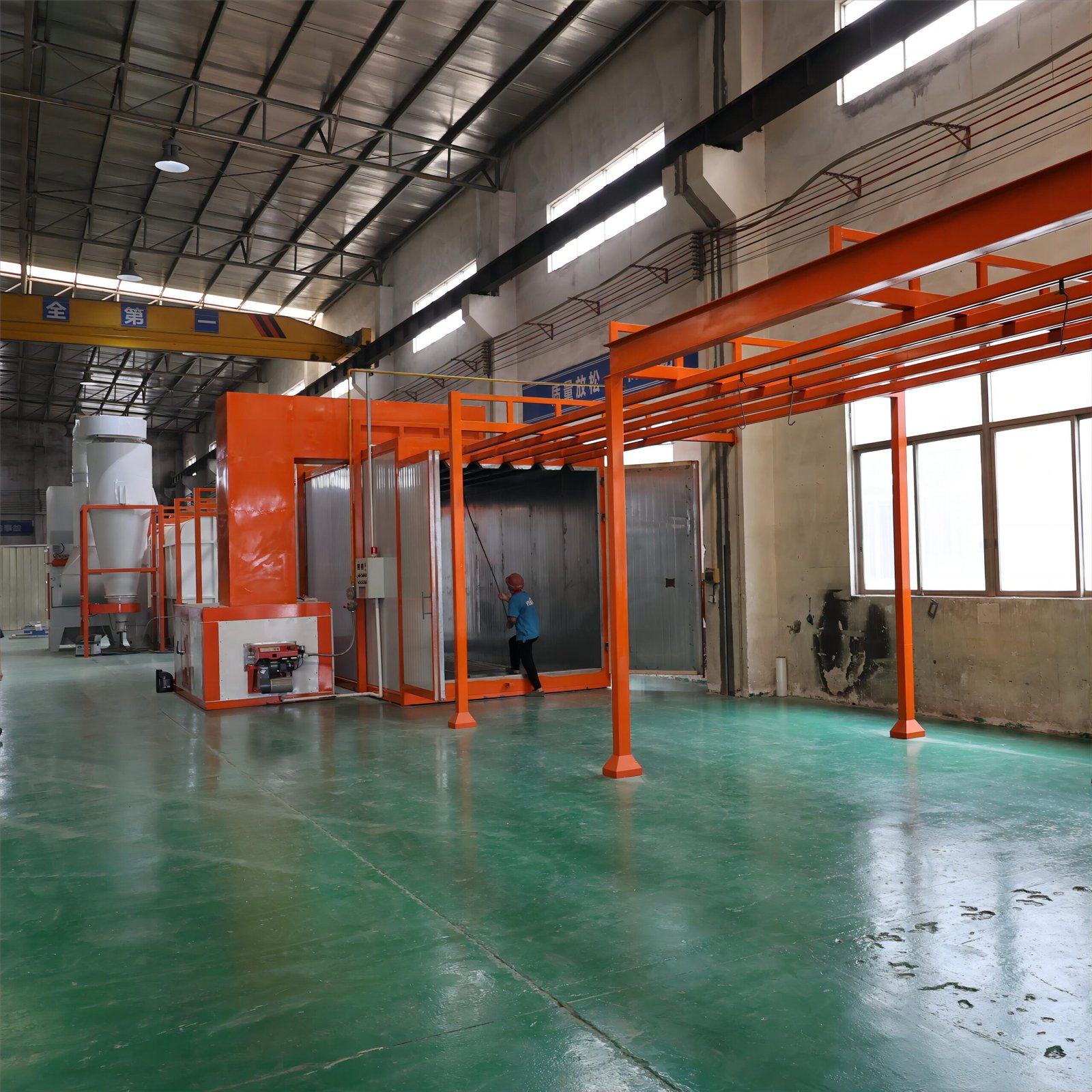How Energy-Efficient Are Spray Coating Production Lines?

Rising energy bills and stricter emissions rules are forcing manufacturers to rethink their spray coating processes.
Spray coating production lines can become highly energy-efficient with modern equipment, automation, and proper management—cutting operational costs and reducing environmental impact.
But how much energy do these lines really use? And where can improvements be made?
What are spray coating production lines and why does energy matter?

You can't manage what you don’t measure.
A spray coating production line includes spray booths, curing ovens, compressors, and ventilation—all of which consume energy during operation.
These systems are vital in industries like:
- Automotive: for corrosion protection and paint finishes
- Aerospace: for thermal and environmental shielding
- Manufacturing: for functional and aesthetic coatings
Because energy makes up a large portion of operating costs, boosting energy efficiency isn't just green—it's profitable.
What components use the most energy in spray coating lines?
Not all parts are equal energy hogs.
Curing ovens and compressors are the biggest energy users, followed by ventilation and spray systems.
| Component | Energy Use Level | Notes |
|---|---|---|
| Curing Ovens | Very High | Especially gas ovens or poorly insulated models |
| Compressors | High | Often run continuously at high load |
| Ventilation Fans | Medium to High | Needed for overspray and VOC control |
| Spray Guns | Low to Medium | Efficient models reduce overspray and air use |
Older or poorly maintained equipment can double the energy use compared to modern alternatives.
How is energy efficiency measured in spray lines?
What gets measured gets optimized.
Energy efficiency is typically measured in kilowatt-hours (kWh) per unit coated or per square meter.
Other helpful metrics:
- kWh per shift
- Energy use by subsystem (oven, compressor, etc.)
- Thermal efficiency (for gas systems)
Tracking these helps identify leaks—both literal and figurative—and sets a baseline for improvement.
What factors affect how much energy a spray line uses?
Small things make a big difference.
Equipment age, maintenance habits, operator skill, and layout design all influence energy use.
| Factor | Impact | Example |
|---|---|---|
| Equipment Age | High | Old ovens lose heat quickly |
| Operator Training | Medium to High | Proper spray techniques reduce waste |
| Airflow Management | High | Leaky ducting = wasted power |
| Insulation Quality | High | Poor insulation in ovens means more fuel use |
Neglect in any one area can increase total energy consumption by 15–40%.
What technologies are making spray lines more efficient?
Technology is making “green” the new default.
Modern spray coating lines use automation, sensors, and high-efficiency components to lower energy use.
Popular upgrades include:
- IR or UV curing ovens instead of convection
- Smart PLCs to manage oven temps and fan speeds
- High transfer efficiency guns that reduce overspray
- Variable frequency drives (VFDs) on compressors and fans
Some systems adjust in real time to part size, material flow, or temperature—cutting waste automatically.
What best practices improve energy efficiency?
You don’t always need new gear to save power.
Simple practices like scheduling, cleaning, and calibration can improve energy use by 10–25%.
Checklist:
- Calibrate spray guns weekly
- Schedule preventive maintenance for compressors and ovens
- Train operators on air pressure and flow control
- Insulate oven chambers and ducting
- Limit booth downtime by batching similar jobs
Education is key—people are often the biggest variable in your energy bill.
Are there real-world examples of spray lines saving energy?
Theory is good. Results are better.
A global car manufacturer cut energy use by 30% after switching to high-efficiency nozzles and upgrading its curing ovens.
Another case:
- A furniture plant in Asia added infrared curing and motion-sensor controlled ventilation.
- Result: 40% reduction in power use per shift and a 20% drop in VOC-related downtime.
Across industries, payback time for energy upgrades averages 12–24 months.
What’s the environmental impact of inefficient spray lines?
Waste doesn’t just hit your wallet—it hits the planet.
Inefficient systems use more electricity or gas, emit more CO₂, and often waste raw coating materials.
Key issues:
- Higher carbon footprint
- Increased VOC emissions
- Greater hazardous waste from overspray
Switching to more efficient systems supports compliance with tightening environmental laws and improves your brand’s sustainability profile.
How will energy efficiency trends shape the future of spray lines?
The next leap is already here.
Expect to see more AI-assisted spray paths, digital twins for energy modeling, and real-time monitoring dashboards.
Emerging trends:
- Self-adjusting oven temperatures
- Air reclaim systems for spray booths
- Part-specific spray automation
- Cloud-based performance dashboards
As carbon taxes rise and energy costs fluctuate, energy-smart systems will be the new industry standard.
Conclusion
Spray coating production lines have a lot of room for energy savings—from smart upgrades to simple daily habits. With new technology and better metrics, we’re no longer guessing—we’re optimizing.
